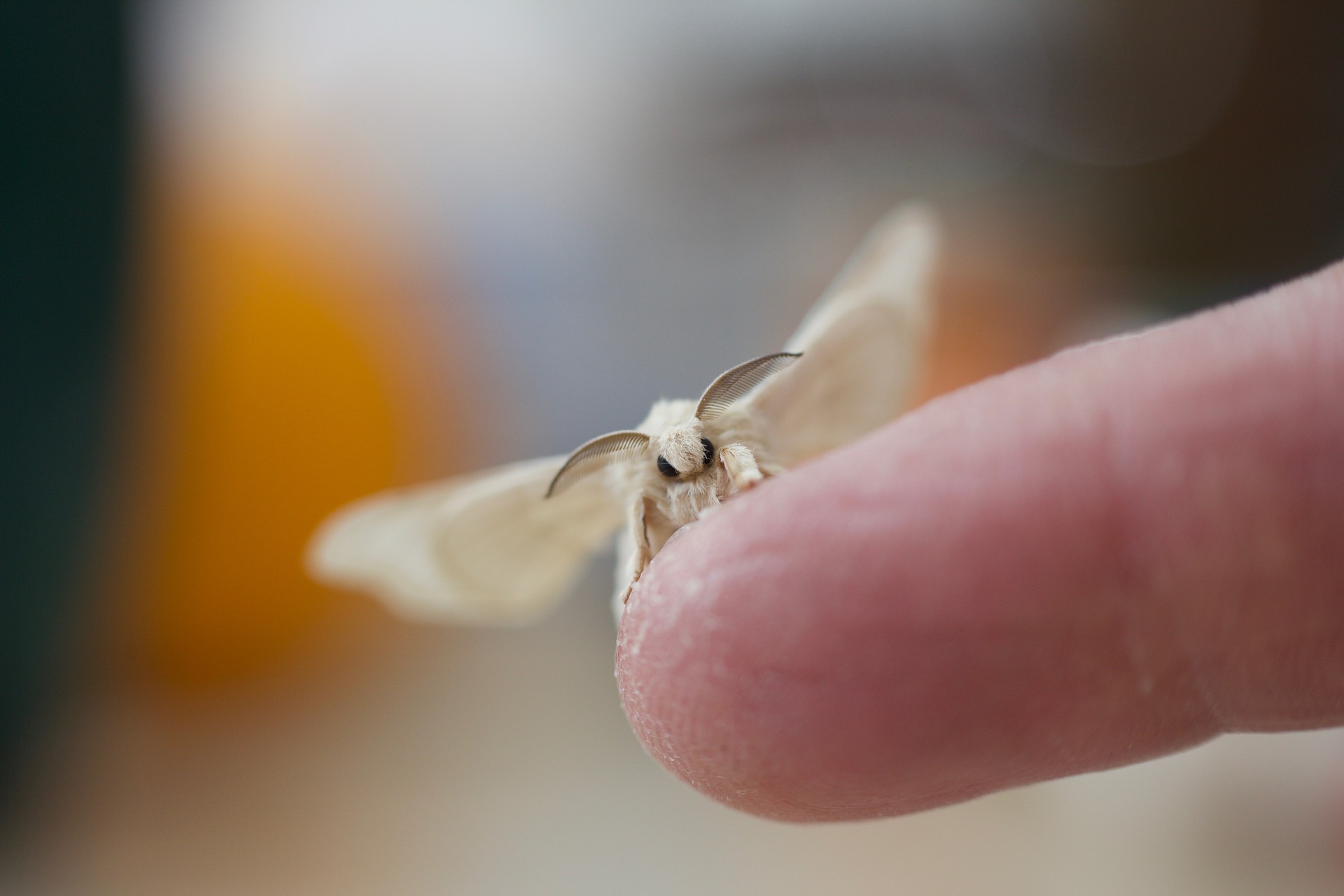Silk is a type of protein called fibroin, a beta-keratin related to hair and nails. Silk fabric is made from the cocoons of the Silk Moth (Bombyx mori – pictured below), which are unravelled and spun into fine cloths. The fabric can be dyed an amazing range of colours as it holds dye well.
Silk has a beautiful sheen and has been used for millennia. Silk worm farming or sericulture has existed in China since before 2500BC, as recorded in Confucian (ancient Chinese) texts. Some fabric dating to around 5000BC. India also has a long history of silk farming.
Silkworms eat mulberry leaves, and are kept in large trays where leaves are delivered daily for the first few weeks of their lives, until they have grown and moulted their skins four times. They form pupae made from about 1 mile of silk fibres, which they spin from two salivary glands in their heads.
The next stage of the process unravels the silk cocoons. The pupae are boiled to kill the larvae inside, and then sorted, as only a small part of the pupa can be used. About 2,500 silkworms will produce half a kilogram or about a pound of raw silk.
Ghandi objected to the cruelty of silk farming as it harmed living creatures. There are cruelty-free types of silk now available, including Ahimsa silk made from the discarded cocoons of the wild silk-moth.



